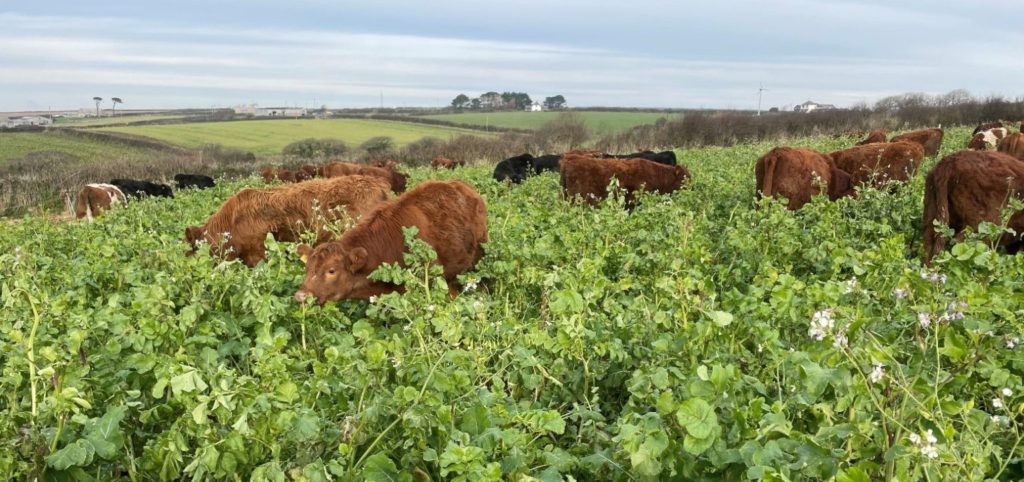By Robert Purdew, Farm Carbon and Soils Advisor
There is a growing concern about carbon “tunnel vision” in agriculture, where the sole focus is on reducing emissions without considering the bigger picture. Reducing emissions is crucial, yet it’s important to acknowledge that it is only one piece of the puzzle and focusing solely on carbon can neglect factors such as soil health, water quality, biodiversity and other issues such as pollution. There is also often concern from farmers about how the pressures to achieve net zero targets can impact profitability, especially when incentives to be net zero are limited or non-existent, and investments in the infrastructure and technology required to transition to low-carbon farming are high.
But this doesn’t have to be the case. We can use an understanding of a farm’s emissions to make informed decisions to change management practices that can lead directly to both reduced emissions and increased profitability, and we can point to an increased number of farmers who are doing just this.
Mike and Sam Roberts farm 435 acres at Blable Farm, of which a large proportion is down to herbal leys. After Sam returned to the farm in 2018 a decision was made to review the whole operation and, in conjunction with James Daniel of Precision Grazing, the decision was made to reduce the herd slightly from 180 to 150 cows, implement rotational grazing on diverse leys and to focus on reducing inputs and improving soil health.

Cattle out wintering at Blable Farm
The effects were immediate and obvious. Soil health has seen a rapid improvement with better structure, increased earthworm numbers and soil organic matter is on the rise. The grazing period has been increased from 6 to 12 months and the farm hasn’t bought fertiliser since 2021, with none being used last year. Importantly, animal performance has increased in line with improved soil health and while cow numbers were reduced initially Mike and Sam are looking at increasing numbers again. All of this has seen a significant saving on input costs which has been re-invested into the business, including a full soil audit to better understand how soil health is improving. In line with reduced costs on-farm emissions have been reduced significantly with Mike confident the farm can reach net zero within 5 years, a commitment made as part of being a demo farm for the Farm Net Zero project.
Another example of a farmer using an understanding of their carbon footprint to drive down costs and improve profitability is Tom Burge of Oaremead Farm. Tom farms 760 acres of grassland on Exmoor and runs both a suckler herd and commercial sheep flock. In 2017 Tom began shifting to a more regenerative farming system which predominantly focussed on an improvement in grazing management, once again aided by James Daniel from Precision Grazing.
Over 5 years, Tom has completely cut out the use of artificial fertiliser and reduced his feed use by over 70%. This has been made possible by an increase in dry matter grown of 0.9 tDM/ha, through improved grazing management, and has reduced input costs by 50%, with a similar reduction in emissions from inputs, as shown in the chart below. Crucially the farm is now profitable before taking into account income from subsidies and environmental schemes. In the next 5 years, Tom plans to completely cut out bought-in feed and to have halved fuel use and, like Mike and Sam, be well on the road to net zero while remaining highly productive and profitable.
Oaremead Farm emissions from inputs
These are just two of an increasing number of examples that we are coming across as we work with more and more farmers who are using their carbon emissions as just one metric to help improve their farm businesses. And far from impacting just a farm’s emissions and bottom line, the management changes that are being implemented are having beneficial impacts on those ecosystem services mentioned previously, soil health, biodiversity, water quality and reduced pollution. Proof if ever it was needed of the potential for long-term sustainability within our farming systems.
